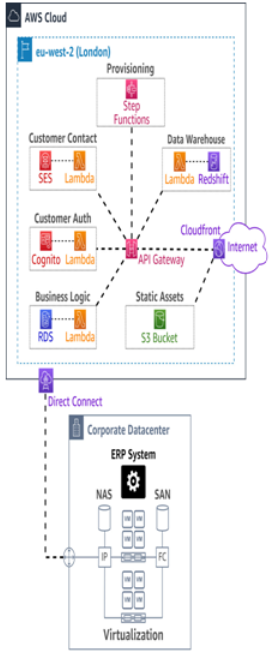Regulatory compliance – Getting Started with Edge Computing on AWS
Data privacy and sovereignty requirements vary across political entities. Compliance regimes such as the EU’s General Data Protection Regulation (GDPR) impose constraints upon where a given piece of data associated with an individual is physically located. For instance, a US-based company that runs its applications in the AWS cloud might decide it needs to keep records associated with EU data subjects within the physical boundaries of a country where AWS does not have a region.
Other times, national sovereignty comes into play. Countries often have special rules regarding emergency services systems, such as 911 in North America or 112 in Europe. It is not uncommon that such government-operated applications must certify that it is not possible for another country to disable them. This generally entails keeping the physical infrastructure within the borders of said country.
Inertia
Since the inception of AWS in 2006, some organizations (or individual departments within them) have taken a wait-and-see approach – maybe the cloud will just go away if they ignore it. Sometimes there are trust issues, especially when implementing hybrid cloud solutions that involve on-premise components. While this becomes less common every year, such inertia is still encountered at times.
So, given all of that, how is AWS addressing these challenges?
The AWS edge computing strategy
The combined effects of physics, economics, regulatory compliance, and organizational inertia have led to customers implementing hybrid architectures that require them to continue operating a full data center stack – even if all they want to do is host a few virtual machines.
An example of such a situation is depicted next. In this instance, the customer has built a cloud-native application making full use of the benefits afforded by AWS managed services. This application interacts with their ERP system to provide real-time insights from their manufacturing plants. However, because their ERP system must reside in a particular geography, they have retained a small physical footprint in their corporate data center. Their developers have to interact with on-premise components using different APIs than they use for cloud-based elements. Their operations team has to use a different set of tools to manage those resources, and what’s worse, they have to care about the underlying substrate to a far greater degree than they do in the cloud:

Figure 1.2 – Hybrid cloud architecture
The AWS edge computing strategy is intended to simplify this situation for customers. It does so by extending AWS’ managed service offerings to physical locations outside of the core regions – to wherever customers need them.
Take the example of AWS Lambda functions. While you are likely familiar with running them in a region, they can also be run in one of AWS’ 400+ points of presence for ingress/egress to its global backbone. You can take this further and run a function in your on-premise data center(s) on an AWS Outposts server or in the middle of nowhere on an embedded device such as a smart camera.
Examples of situations where this extension of AWS managed services farther from the regions can help include:
An autonomous Unmanned Aerial Vehicle (UAV) circling over a factory scanning the perimeter for human faces and comparing them to a list of employees
An offshore oil rig with a developing problem that local maintenance staff need to be alerted to – and even told which valve needs to be turned and at how many degrees by a digital overlay they see through their smart glasses
An AR headset worn by a worker deep underground in a mine shaft being assisted by a geologist on the other side of the world
A soldier observing an enemy position using a device that delivers inferences based on petabytes of cloud data to enhance that soldier’s situational awareness
In the parking lot outside of State Farm Stadium onboard a semi-trailer that acts as a miniature data center on wheels where workers are editing and producing the live video feed for Super Bowl LVII
The AWS edge computing strategy focuses on customer use cases. These are grouped into families, four of which this book will address – DDIL, MEC, immersive experiences, and IIoT.
You may also like
Archives
- August 2024
- July 2024
- June 2024
- May 2024
- April 2024
- March 2024
- February 2024
- January 2024
- December 2023
- November 2023
- October 2023
- September 2023
- August 2023
- July 2023
- May 2023
- April 2023
- February 2023
- January 2023
- November 2022
- October 2022
- September 2022
- August 2022
- July 2022
- June 2022
- May 2022
- April 2022
- December 2021
- November 2021
- October 2021
- September 2021
- June 2021
Calendar
| M | T | W | T | F | S | S |
|---|---|---|---|---|---|---|
| 1 | 2 | 3 | 4 | 5 | 6 | |
| 7 | 8 | 9 | 10 | 11 | 12 | 13 |
| 14 | 15 | 16 | 17 | 18 | 19 | 20 |
| 21 | 22 | 23 | 24 | 25 | 26 | 27 |
| 28 | 29 | 30 | 31 | |||
Leave a Reply